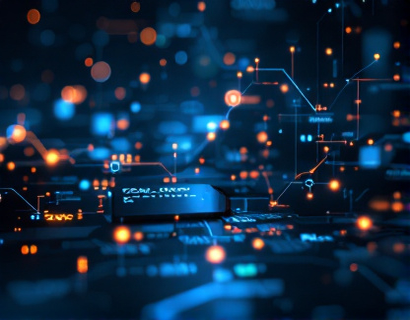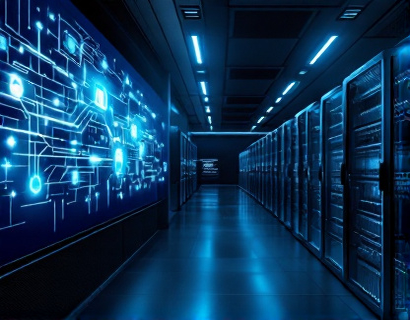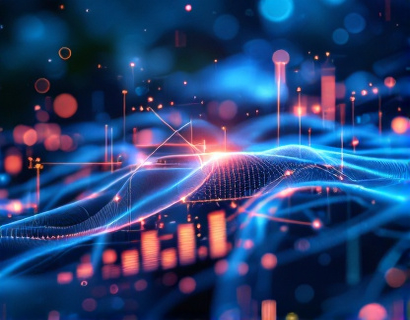Ucosystem Simplified: A Beginner's Guide to Navigating Interconnected Complexity and Unlocking Its Benefits
The Ucosystem, a term that encapsulates the intricate web of interconnected systems and technologies, can seem daunting to newcomers. This guide aims to demystify the Ucosystem, breaking down its complex components and highlighting key benefits. By the end of this article, readers will have a clearer understanding of how to navigate this interconnected landscape effectively.
To begin, it's essential to grasp the fundamental concept of the Ucosystem. At its core, the Ucosystem refers to the network of systems, platforms, and technologies that interact and influence each other. This ecosystem is not limited to technology alone but extends to social, economic, and environmental factors. Understanding the Ucosystem requires recognizing these interconnections and how they impact various aspects of life and business.
Understanding the Components of the Ucosystem
The Ucosystem comprises several key components, each playing a crucial role in the overall functionality and dynamics of the system. These components include:
- Technological Platforms: These are the digital frameworks that enable interaction and data exchange. Examples include social media platforms, e-commerce sites, and cloud computing services.
- Data Networks: Data is the lifeblood of the Ucosystem. Data networks facilitate the collection, storage, and analysis of vast amounts of information, providing insights that drive decision-making.
- Human Networks: People are the most valuable asset in the Ucosystem. Human networks encompass the relationships, collaborations, and communities that form the social fabric of the ecosystem.
- Physical Infrastructure: This includes the tangible elements such as servers, data centers, and transportation systems that support the technological and data networks.
- Regulatory Frameworks: Laws and regulations shape how the Ucosystem operates, ensuring fairness, security, and ethical standards are maintained.
Each of these components interacts in complex ways, creating a dynamic and ever-evolving environment. For instance, technological platforms rely on data networks to function effectively, while human networks can influence both technological and regulatory developments.
Navigating the Complexity of the Ucosystem
Navigating the Ucosystem requires a strategic approach. Here are some key strategies to help individuals effectively navigate this interconnected landscape:
First, develop a foundational knowledge of the key components and their interrelations. This involves staying informed about technological advancements, data trends, and regulatory changes. Resources such as online courses, webinars, and industry publications can be invaluable in building this knowledge base.
Second, foster a network of contacts and collaborators. Engaging with professionals, joining relevant communities, and participating in forums can provide insights and opportunities that might not be apparent otherwise. Building a strong network can also offer support and guidance as you navigate the Ucosystem.
Third, embrace a mindset of continuous learning and adaptability. The Ucosystem is constantly evolving, and staying relevant requires being open to new ideas and technologies. This might involve experimenting with new tools, attending conferences, or simply keeping an open mind to change.
Lastly, focus on creating value. Whether in a personal or professional context, identifying ways to contribute positively to the Ucosystem can lead to meaningful outcomes. This could involve developing innovative solutions, sharing knowledge, or advocating for positive change.
Key Benefits of the Ucosystem
The Ucosystem offers numerous benefits that can enhance various aspects of life and business. Some of the most significant advantages include:
Enhanced Collaboration: The interconnected nature of the Ucosystem facilitates collaboration across borders and disciplines. This can lead to innovative solutions and breakthroughs that might not be possible in isolation.
Improved Efficiency: Automation and data-driven insights can streamline processes, reduce costs, and increase productivity. For businesses, this means better resource management and a competitive edge.
Greater Access to Information: The vast data networks within the Ucosystem provide unparalleled access to information. This can empower individuals and organizations to make informed decisions and stay ahead of trends.
Increased Innovation: The cross-pollination of ideas and technologies within the Ucosystem fosters innovation. New combinations of existing technologies can lead to groundbreaking products and services.
Enhanced User Experiences: By leveraging the interconnectedness of the Ucosystem, companies can create more personalized and seamless user experiences, leading to higher customer satisfaction and loyalty.
Real-World Applications of the Ucosystem
To better understand the practical implications of the Ucosystem, let's explore some real-world applications across different sectors:
Healthcare
In healthcare, the Ucosystem enables the integration of electronic health records, telemedicine, and wearable devices. This interconnected approach allows for more accurate diagnoses, personalized treatment plans, and improved patient care. Data analytics can identify trends and predict health outcomes, leading to proactive interventions.
Finance
In the financial sector, the Ucosystem facilitates real-time transactions, fraud detection, and risk management through advanced data analytics and blockchain technology. This creates a more secure and efficient financial environment, benefiting both institutions and consumers.
Retail
Retailers leverage the Ucosystem to offer omnichannel shopping experiences, where customers can seamlessly transition between online and in-store interactions. Data-driven insights help in inventory management, personalized marketing, and enhancing customer service.
Education
In education, the Ucosystem supports online learning platforms, virtual classrooms, and educational apps. These tools make learning more accessible and flexible, catering to diverse learning styles and needs. Data analytics can also help in assessing student performance and tailoring educational content.
Challenges and Considerations
While the Ucosystem offers numerous benefits, it also presents challenges that need to be addressed:
Privacy and Security: With the increased collection and sharing of data, privacy concerns are paramount. Ensuring robust security measures and transparent data practices is crucial to maintaining trust.
Digital Divide: The Ucosystem can exacerbate inequalities if access to technology and digital literacy is not widespread. Efforts to bridge the digital divide are essential for inclusive growth.
Regulatory Compliance: Navigating the complex landscape of regulations across different regions can be challenging. Staying compliant while innovating requires careful planning and expertise.
Sustainability: The environmental impact of the Ucosystem, particularly in terms of energy consumption and e-waste, must be considered. Adopting sustainable practices and technologies is vital for long-term viability.
Conclusion
Understanding and navigating the Ucosystem is becoming increasingly important in today's interconnected world. By breaking down its complex components and recognizing the key benefits, individuals can better position themselves to thrive in this dynamic environment. Whether in personal or professional contexts, embracing the Ucosystem can lead to enhanced collaboration, efficiency, and innovation. As the Ucosystem continues to evolve, staying informed, adaptable, and value-oriented will be key to success.










































